Preface
Goal: Curve fitting examples for daily basis, using vandermonde matrix.
For daily basis, we do not need to derive mathematical equation at all. We can utilize ready to use worksheet and python script.
I have prepared a workbook containing different worksheet:
- Linear Equation (first order polynomial)
- Quadratic Equation (second order polynomial)
- Cubic Equation (third order polynomial)

Following previous article, each case has three steps:
- From the known coefficient, find the points (x, y).
- Building the matrix visually, based on equation of the system.
- From the points (x, y), find the coefficient. Inverse the matrix, solving the equation.
For daily basis, all you need is just the last sheet (matrix inverse) of selected case (order). The real data for daily basis is dispersed, unlike given data in this example sheet.
The worksheet is pretty explanatory. Assuming that you have read previous article, The first and the second sheet is, already well explained in previous article, so we are going to skip these sheets. I do not think that I should explain each worksheet in detail.
The python script also has been explained in previous article, the purpose of this exampale is just giving a ready to use script. So I won’t go into detail either.
Other Method
Vandermonde matrix is not the only method to get polynomial equation. We are going to use Least Square method later.
Worksheet Source
Playsheet Artefact
The Excel file is available, so you can have fun, modify as you want.
1: Linear Equation
First Order Polynomial Method
Curve Fitting
Since real data matrix is definitely not a square matrix,
and matrix inverse can only work with square nxn matrix.
We need to alter the equation with transpose.
Here is the visual implementation in spreadsheet.
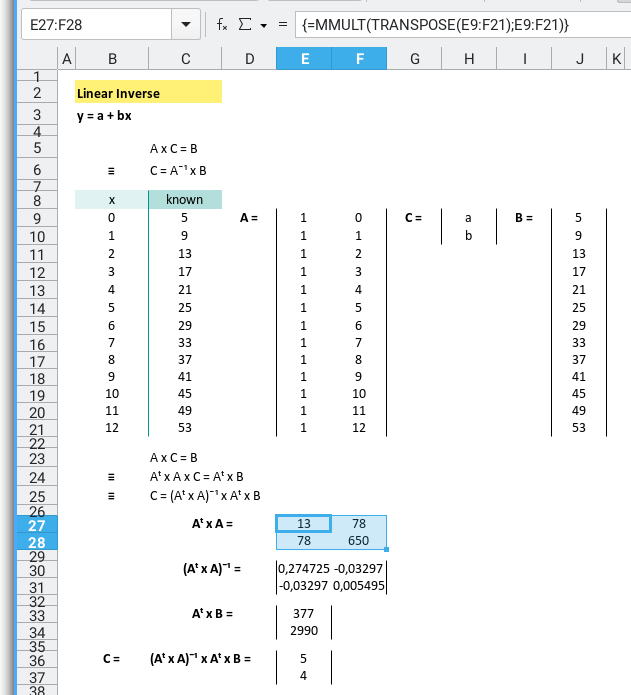
The formula in spreadsheet are as below:
=MMULT(TRANSPOSE(E9:F21);E9:F21)then inverse
=MINVERSE(E27:F28)then inverse
then continue
=MMULT(TRANSPOSE(E9:F21);J9:J21)and finally the solution
then continue
=MMULT(E30:F31;E33:E34)Let’s clean the spreadsheet view.
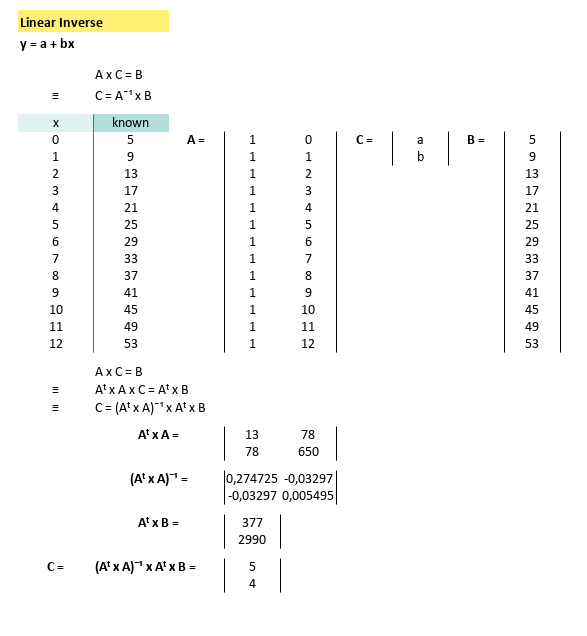
With the coefficient below:
And known x for this equation
We can calculate y` by using spreadsheet formula.
=$C$43+$C$44*B47The prediction value can be shown as spreadsheet below:
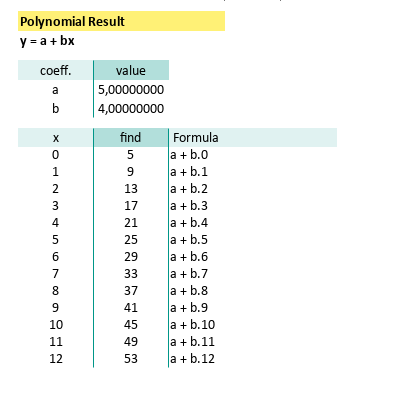
Python Scripts
Instead of hardcoded data, we can setup the source data in CSV.
The CSV looks like this file below:
x,y
0,5
1,9
2,13
3,17
4,21
5,25
6,29
7,33
8,37
9,41
10,45
11,49
12,53The python source can be obtained from below link
It is very similar with source code in previous article, except that it is for linear equation. So I don’t think that I should explain into the detail.
# Initial Matrix Value
order = 1
# Getting Matrix Values
mCSV = np.genfromtxt("31-linear-equation.csv",
skip_header=1, delimiter=",", dtype=float)
...With data series in CSV above we can get all curve fitting as below:
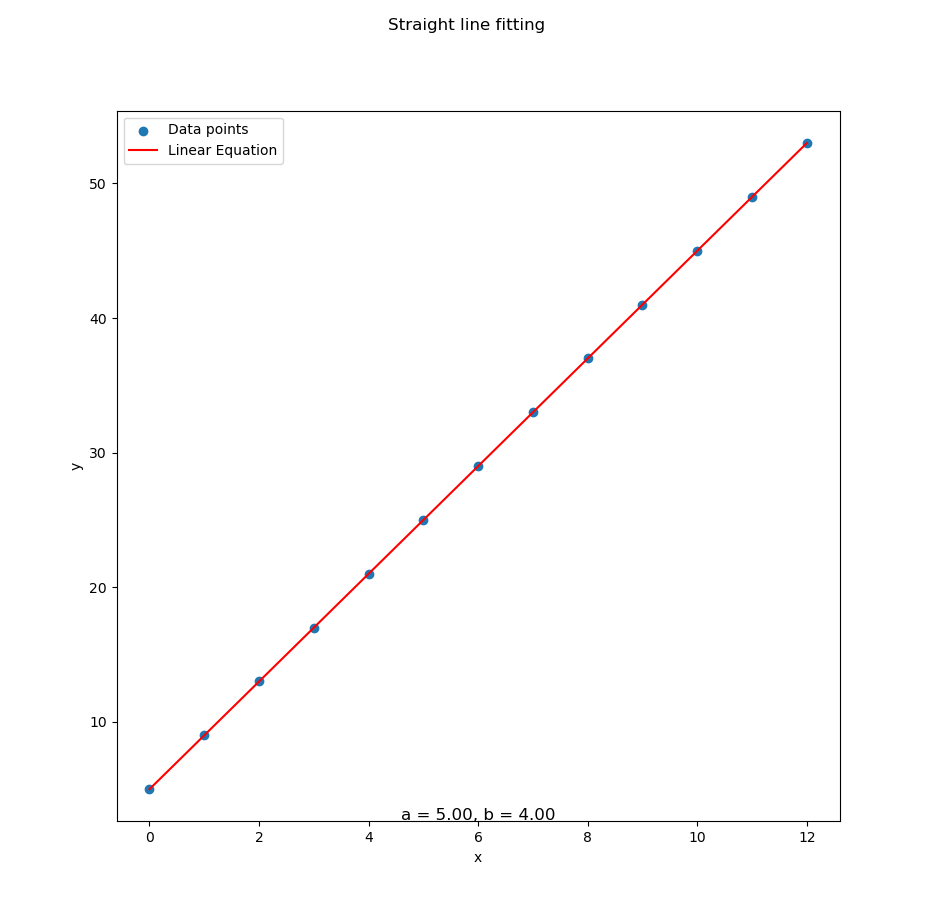
Interactive JupyterLab
You can obtain the interactive JupyterLab in this following link:
2: Quadratic Equation
Second Order Polynomial Method
Curve Fitting
With the same step as above linear system equation, we can get visual implementation in spreadsheet of quadratic system equation.
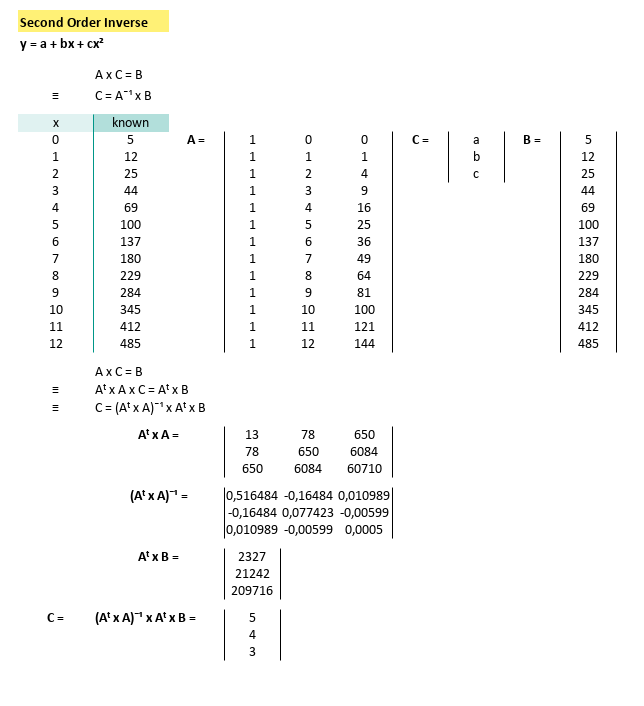
With can write the result as coefficient below:
With known x for this equation,
we can calculate y by using spreadsheet formula.
The prediction value can be shown as spreadsheet below:

Python Scripts
Instead of hardcoded data, we can setup the source data in CSV.
The CSV looks like this file below:
x,y
0,5
1,12
2,25
3,44
4,69
5,100
6,137
7,180
8,229
9,284
10,345
11,412
12,485The python source can be obtained from below link
It is very similar with source code in previous article, except that it is for quadratic equation. So again, I don’t think that I should explain into the detail.
# Initial Matrix Value
order = 2
# Getting Matrix Values
mCSV = np.genfromtxt("32-data-second-order.csv",
skip_header=1, delimiter=",", dtype=float)
...With data series in CSV above we can get all curve fitting as below:
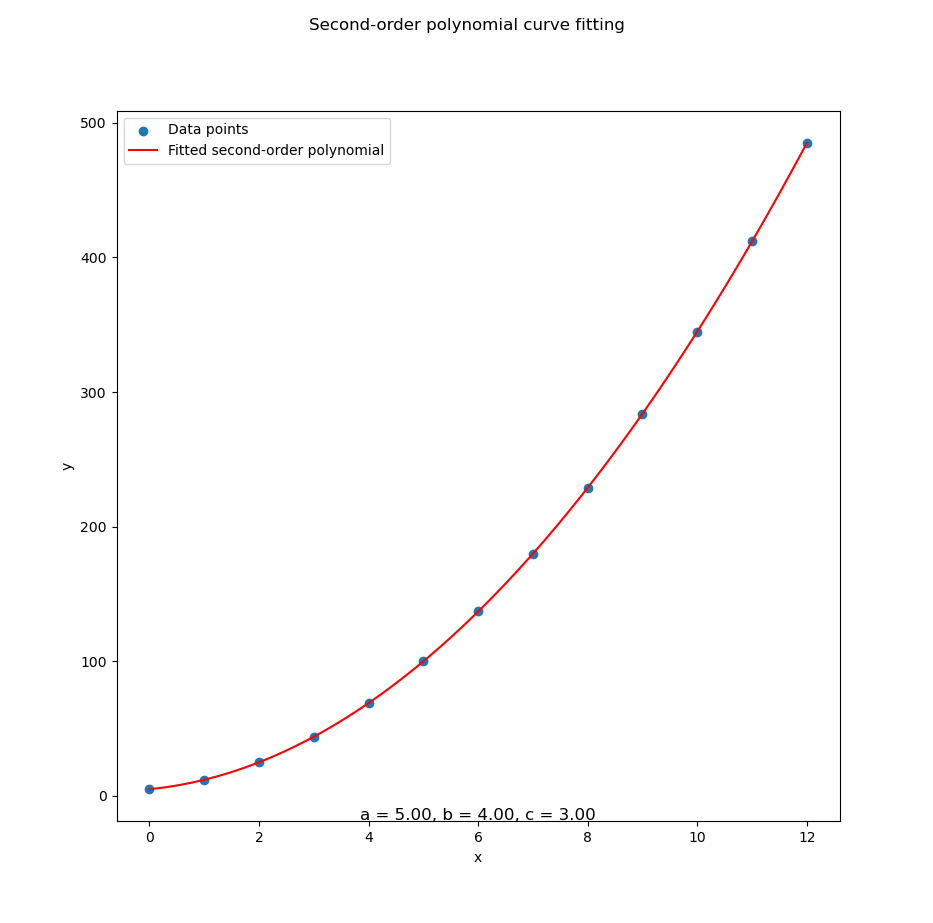
Interactive JupyterLab
You can obtain the interactive JupyterLab in this following link:
3: Cubic Equation
Third Order Polynomial Method
Curve Fitting
With the same step as above linear system equation, we can get visual implementation in spreadsheet of cubic system equation.

With can write the result as coefficient below:
With known x for this equation,
we can calculate y by using spreadsheet formula.
The prediction value can be shown as spreadsheet below:

Python Scripts
Instead of hardcoded data, we can setup the source data in CSV.
The CSV looks like this file below:
x,y
0,5
1,14
2,41
3,98
4,197
5,350
6,569
7,866
8,1253
9,1742
10,2345
11,3074
12,3941The python source can be obtained from below link
It is very similar with source code in previous article, except that it is for quadratic equation. So again, I don’t think that I should explain into the detail.
# Initial Matrix Value
order = 3
# Getting Matrix Values
mCSV = np.genfromtxt("33-data-third-order.csv",
skip_header=1, delimiter=",", dtype=float)
...With data series in CSV above we can get all curve fitting as below:

Interactive JupyterLab
You can obtain the interactive JupyterLab in this following link:
What’s the Next Chapter 🤔?
There is also a more powerful approach to solve curve fitting. It is the least square, starting from linier, and then we can continue exploring quadratic and also cubic. This way we can step on the regression and also correlation analysis. However we should step-in from the simple thing. It is the linear least square.
Consider progressing further by exploring the next topic: [ Trend - Least Square ].